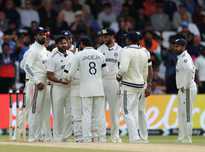On August 20, 2025, the night sky hosted a groundbreaking mission as Russia launched its Bion-M No. 2 biosatellite from the historic Baikonur Cosmodrome in Kazakhstan. This ambitious mission carried 75 mice, 1,500 fruit flies, plants, microorganisms, and lunar dust, all designed to advance space medicine and biological research. Scientists aim to study how living organisms adapt to microgravity and cosmic radiation, providing crucial insights for future deep-space missions. Lunar simulants are being exposed to space conditions to understand how moon-like dust reacts in orbit, while the animals help researchers explore radiation effects and generational biological changes. The mission continues Russia’s legacy in biosatellite experiments, shaping the future of human space exploration and medical science.
Russia’s Bion-M No. 2 launch: Biological experiments with mice, fruit flies, and lunar dust in space
The Bion-M No. 2 spacecraft lifted off aboard a Soyuz rocket, continuing Russia’s legacy in biological space experiments. The mission built on insights from the 2013 Bion-M No. 1 launch and is part of the broader Bion programme, which has explored the effects of space radiation and microgravity on living organisms for decades.
Key mission payloads included:- 75 mice, chosen for their genetic similarity to humans and short life cycle
- 1,500 fruit flies, historically used in space research
- Plants and microorganisms for studying growth and adaptation in microgravity
Lunar simulants, provided by the Vernadsky Institute and Institute of Medical and Biological Problems, to test how moon-like dust and rock reacted to space radiation and vacuum for 30 days
The mission was designed to simulate long-term deep-space conditions, offering insights critical for future human exploration of the Moon and Mars.

Source: Space.com
Understanding radiation and microgravity effects on life
One of the mission’s primary goals was to study how radiation and microgravity affect living organisms. By examining changes in biological processes, scientists aim to improve:
- Space medicine protocols for astronauts
- Preventive measures against radiation-related health issues
- Knowledge of adaptation and recovery mechanisms in organisms
The Bion-M No. 2 was placed in orbit at approximately 97 degrees, exposing samples to higher cosmic radiation than standard low-Earth orbits. Researchers from the Russian Academy of Sciences have meticulously planned over a decade of experiments, ensuring the mission maximized data collection.
Why mice were chosen for space experiments
Mice are genetically close to humans, making them ideal subjects to study space-induced biological changes. Their fast reproductive cycle allows scientists to observe multiple generations over a relatively short period.
The mission included three groups of mice:
- Earth-based mice living under normal conditions
- Control mice kept in ground equipment simulating spacecraft conditions
- Space mice exposed to microgravity and high radiation levels
Cameras and sensors continuously monitored the mice, while some rodents had implanted chips for closer physiological tracking. With radiation levels 30% higher than typical near-Earth orbits, the data collected is invaluable for preparing human missions beyond Earth and enhancing medical knowledge on Earth.
Fruit flies and historical animal space missions
Fruit flies have a long history in space research. They were the first animals sent into space on 20 February 1947 aboard a V-2 rocket to study radiation effects on living organisms.
Other animals, including monkeys, dogs, and rabbits, were sent on early missions to:
- Test survival in spaceflight conditions
- Study biological processes before human flights began in 1961
- These missions paved the way for safe human space exploration and continue to inform modern biosatellite experiments like Bion-M No. 2.
Russia advances space science with Bion-M No. 2
The Bion-M No. 2 mission is more than a scientific experiment; it represents a critical step toward long-term space exploration. By analyzing the effects of microgravity and cosmic radiation on mice, fruit flies, and lunar simulants, scientists hope to uncover:
- Mechanisms of long-term adaptation and recovery in living organisms
- Potential medical applications for humans on Earth
- Strategies to protect astronauts on deep-space missions
This mission highlights Russia’s continued commitment to bioscience in space and contributes to the global understanding of life beyond our planet.
Also Read | Elon Musk’s Starlink to use Aadhaar for seamless customer verification in India in collaboration with UIDAI

 India's Dengue Vaccine Inches Closer to Reality as Phase 3 Trials Approach Finish Line
India's Dengue Vaccine Inches Closer to Reality as Phase 3 Trials Approach Finish Line
 Rishabh Pant's Explosive Batting Revolutionizing Cricket, Says Greg Chappell
Rishabh Pant's Explosive Batting Revolutionizing Cricket, Says Greg Chappell
 Blackcaps Gear Up for Blockbuster Home Summer Against Cricket Heavyweights
Blackcaps Gear Up for Blockbuster Home Summer Against Cricket Heavyweights
 Stokes Credits Opening Duo for England's Stunning Chase Against India
Stokes Credits Opening Duo for England's Stunning Chase Against India
 Steve Smith Eyes Grenada Test Return After Injury Layoff
Steve Smith Eyes Grenada Test Return After Injury Layoff
 Ancient Remedies: 5 Herbal Teas for Menstrual Cramp Relief
Ancient Remedies: 5 Herbal Teas for Menstrual Cramp Relief
 Sri Lanka's Fielding Masterclass Propels ODI Victory Over Bangladesh, Hasaranga Lauds Team Effort
Sri Lanka's Fielding Masterclass Propels ODI Victory Over Bangladesh, Hasaranga Lauds Team Effort
 Woakes Voices Frustration as Close DRS Calls Haunt England Against India at Edgbaston
Woakes Voices Frustration as Close DRS Calls Haunt England Against India at Edgbaston
 7 Telltale Signs Your Partner May Be Commitment-Phobe
7 Telltale Signs Your Partner May Be Commitment-Phobe
 Gambhir Defends India's Lower Order After Test Collapse, Cites Fielding Lapses
Gambhir Defends India's Lower Order After Test Collapse, Cites Fielding Lapses